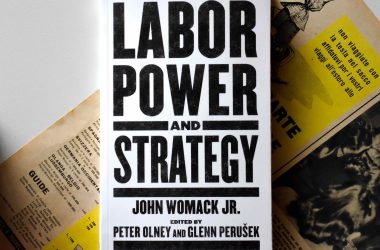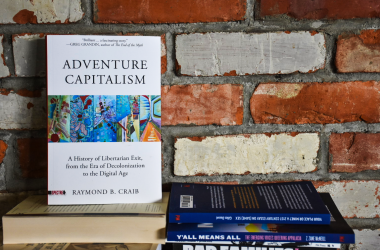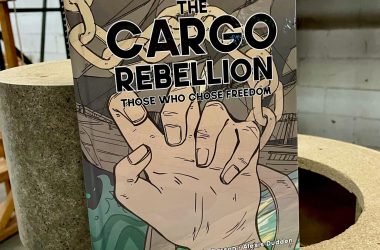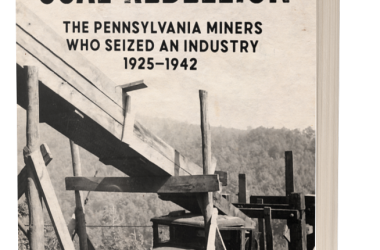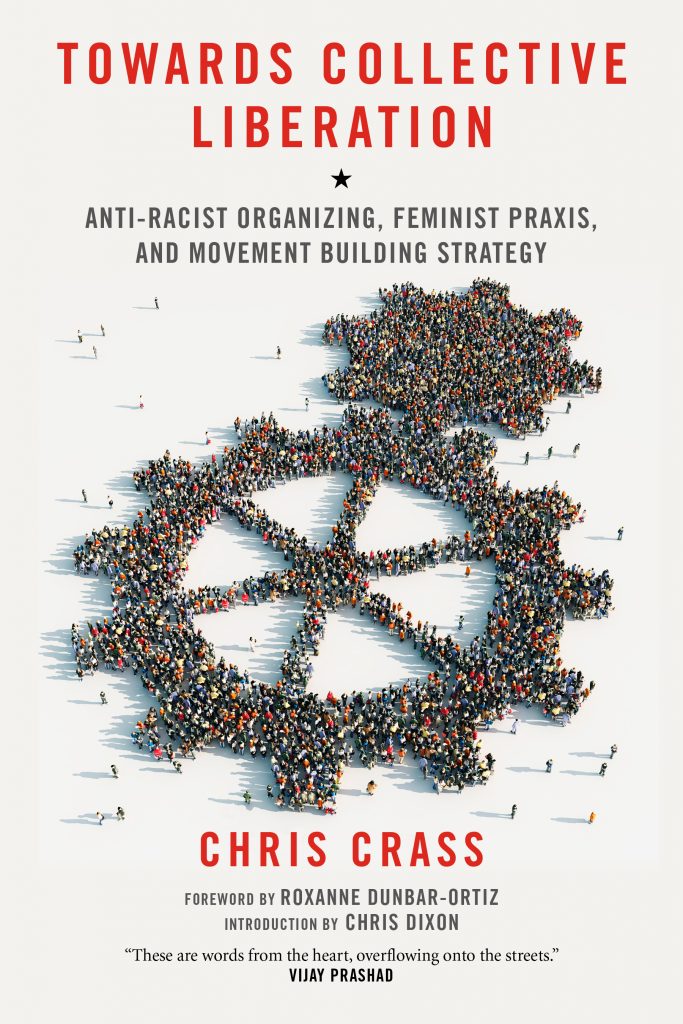
by Yutaka Dirks
Briarpatch Magazine
May 1, 2013
Chris
Crass is a longtime activist originally from California where he was
active in San Francisco Food Not Bombs (FNB) and the Love and Rage
Revolutionary Anarchist Federation. As an educator and organizer with
the Catalyst Project for over 10 years, Crass supported anti-racist
politics and leadership development in the U.S. left, working to foster
and support multiracial alliances. Towards Collective Liberation collects
several of his essays from the last decade about anti-racist feminist
practice and anarchist leadership and intersperses them with material
written from his new home in Tennessee.
After a short essay on
what anarchism might offer those attempting to enact a visionary left
politics, Crass provides a fulsome, critical history of FNB, a group
that has introduced thousands of young, mainly white, people into
radical politics. He offers an engaging insider’s account of the class
struggle in San Francisco in the early ’90s, as well as a frank
discussion of the struggles within FNB around organization and strategy
and internal sexism and racism.
Crass sees “collective
liberation” – a term borrowed from an essay by bell hooks – as a “vision
of what we want and a strategic framework to help us get there.”
Acknowledging his debt to feminists of colour, he shares honest,
personal reflections on challenging male and white supremacy. While he
does not offer a developed analysis of the difference between
“anti-oppression” and “collective liberation,” he seems to prefer the
latter term and critiques the tendency to focus on “what not to do,
rather than what to do.”
Towards Collective Liberation
includes interviews with a variety of activists from organizations that
are leading anti-racist efforts in white communities and in
majority-white campaigns. Amy Dudley from Oregon’s Rural Organizing
Project explains the group’s success in strengthening anti-racism and
queer-liberation politics in primarily white, rural communities,
contesting the idea that these places are a ready-made base for the
right. Carla Wallace describes how Kentucky’s Fairness Campaign
intervened in electoral and policy issues in a relatively conservative,
mid-sized city to develop long-term multiracial alliances that were able
to mobilize a grassroots base to defend queer rights and fight racist
police abuse.
The experiences of these two organizations offer
Canadian radicals valuable lessons as they grapple with the reality
that, while Canada is becoming increasingly urban, half of the people in
Canada still live outside major urban centres where the right tends to
dominate, and, apart from a few large cities, the country is
predominantly white.
Also of interest is the work of the
Groundwork Collective, which played a leadership role in amplifying a
racial justice analysis during the recent uprising in Madison, Wis.,
something only possible after building bridges with people of colour who
were leading ongoing, local racial justice organizing. Groundwork
provides a reminder that newly politicized people who are directly
experiencing economic oppression want to shrug off their alienation and
connect with their humanity. The white anti-racists Crass interviews
understand that “struggle is the greatest teacher” and encourage
anti-racist activists to show leadership and help develop a movement
committed to collective liberation during moments such as the Madison
mobilization or the anti-immigrant battles in Arizona.
Crass
leaves the reader with eight practical lessons. Among them, he reminds
us of the importance of setting concrete and measurable goals and
cultivating a “developmental organizing approach that is reflective and
supportive of all its members’ political and skills development.”
Crass
understands that “good ideas are not enough,” but the short essays he
includes addressing “strategic, liberation organizing praxis” are
somewhat disappointing. Written in the early 2000s during the height of
the anti-globalization movement, they highlight the importance of
critical leadership and an organizing culture that works to build and
nurture new leaders and strategic thinking, as exemplified by Ella
Baker’s work in the civil rights struggle. However, given the importance
of building our movements’ capacity and power, a more in-depth and
substantive discussion would be welcome.
It takes hard work to
create and refine “liberatory processes and practices in the here and
now while we fight for the future.” Crass has given white activists and
others an excellent resource to continue this work. Towards Collective Liberation
is a powerful and honest work that underscores the importance of
confronting racism and sexism and nurturing the leadership skills of new
organizers to reach their full potential as a force that can radically
transform society.
Yutaka Dirks is a tenant organizer and writer
living in Toronto. His fiction and essays have appeared in literary
journals and activist publications including the White Wall Review,
Rhubarb Magazine and Beautiful Trouble: A toolbox for revolution. He has
a serious love for stories of all stripes.


